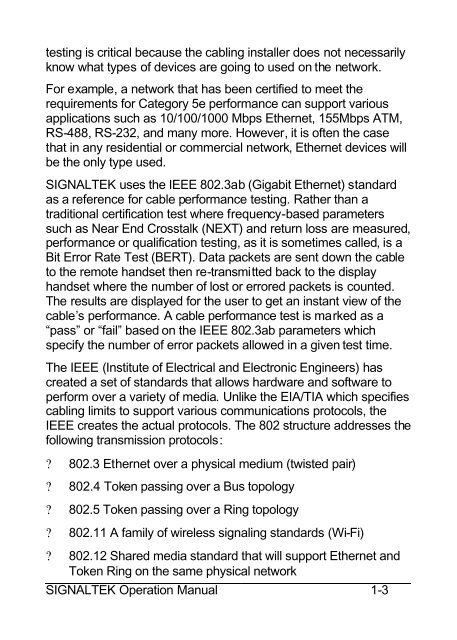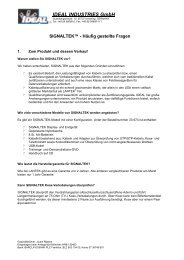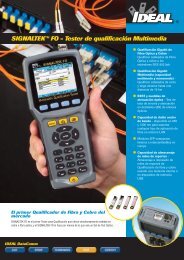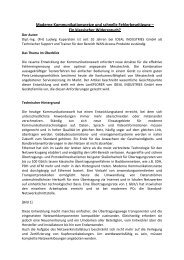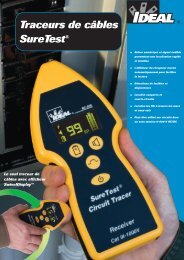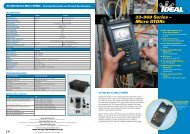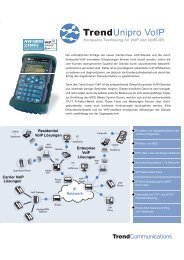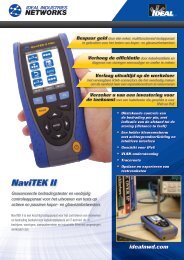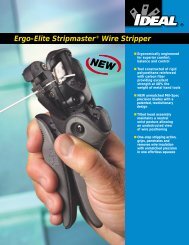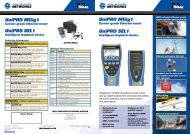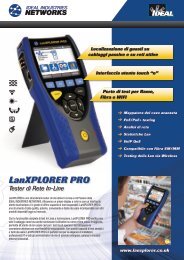SIGNALTEK Users Guide V1.0 English - Ideal Industries
SIGNALTEK Users Guide V1.0 English - Ideal Industries
SIGNALTEK Users Guide V1.0 English - Ideal Industries
You also want an ePaper? Increase the reach of your titles
YUMPU automatically turns print PDFs into web optimized ePapers that Google loves.
testing is critical because the cabling installer does not necessarily<br />
know what types of devices are going to used on the network.<br />
For example, a network that has been certified to meet the<br />
requirements for Category 5e performance can support various<br />
applications such as 10/100/1000 Mbps Ethernet, 155Mbps ATM,<br />
RS-488, RS-232, and many more. However, it is often the case<br />
that in any residential or commercial network, Ethernet devices will<br />
be the only type used.<br />
<strong>SIGNALTEK</strong> uses the IEEE 802.3ab (Gigabit Ethernet) standard<br />
as a reference for cable performance testing. Rather than a<br />
traditional certification test where frequency-based parameters<br />
such as Near End Crosstalk (NEXT) and return loss are measured,<br />
performance or qualification testing, as it is sometimes called, is a<br />
Bit Error Rate Test (BERT). Data packets are sent down the cable<br />
to the remote handset then re-transmitted back to the display<br />
handset where the number of lost or errored packets is counted.<br />
The results are displayed for the user to get an instant view of the<br />
cable’s performance. A cable performance test is marked as a<br />
“pass” or “fail” based on the IEEE 802.3ab parameters which<br />
specify the number of error packets allowed in a given test time.<br />
The IEEE (Institute of Electrical and Electronic Engineers) has<br />
created a set of standards that allows hardware and software to<br />
perform over a variety of media. Unlike the EIA/TIA which specifies<br />
cabling limits to support various communications protocols, the<br />
IEEE creates the actual protocols. The 802 structure addresses the<br />
following transmission protocols:<br />
? 802.3 Ethernet over a physical medium (twisted pair)<br />
? 802.4 Token passing over a Bus topology<br />
? 802.5 Token passing over a Ring topology<br />
? 802.11 A family of wireless signaling standards (Wi-Fi)<br />
? 802.12 Shared media standard that will support Ethernet and<br />
Token Ring on the same physical network<br />
<strong>SIGNALTEK</strong> Operation Manual 1-3


